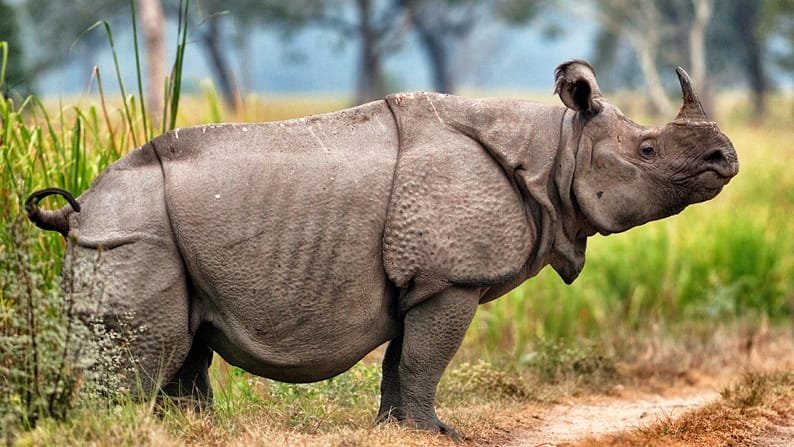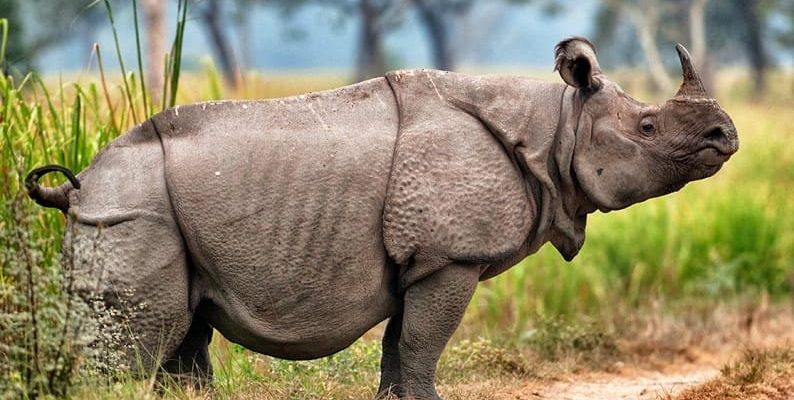
You might be wondering why we should care about the Javan rhinoceros. Well, think of them as living pieces of history. They play a crucial role in maintaining the ecosystem of the forests they inhabit. Their presence ensures a balanced environment for countless other species. So, let’s explore what makes these magnificent creatures so special.
1. Rarity Makes Them One of the Most Endangered Rhinos
The Javan rhinoceros is considered one of the rarest large mammals on Earth. With a population of fewer than 80 individuals left, they are critically endangered. Unlike other rhinoceros species, the Javan rhino has a very limited range. Most of them are found in Ujung Kulon National Park in Indonesia. Imagine trying to find a needle in a haystack—that’s what it’s like searching for a Javan rhino! Their low numbers are a result of habitat loss, poaching, and the encroachment of agriculture.
You might be asking how these beautiful creatures ended up in this precarious position. Primarily, it’s due to human activities. As forests are cut down for farming and development, their habitats shrink. Moreover, illegal poaching remains a threat, despite strict protections in place. Each loss isn’t just a number; it represents a step closer to extinction for this unique species.
2. Unique Physical Features
The Javan rhinoceros stands out from its relatives. One of its most distinctive features is its single horn, which can grow up to 25 centimeters long. Unlike the iconic two-horned African rhinos, the Javan rhino’s horn gives it a unique silhouette. This horn is made of keratin, the same material that makes up human hair and nails, but it serves a much different purpose in the wild.
These rhinos also have tough, folded skin that resembles armor plating. This design helps protect them from predators and the thick underbrush of their jungle habitat. Interestingly, the folds in their skin are not just for show; they help with flexibility, making it easier for the rhino to move through dense vegetation. Imagine wearing a suit of armor that also allows you to dance through the woods!
3. Solitary Creatures with Unique Behaviors
Javan rhinos are solitary animals, which means they prefer spending time alone, unlike elephants or lions that thrive in herds. This solitary nature can make sightings rare. They usually come together only for mating or when a mother is raising her young.
You might think that being alone all the time would get lonely, but for the Javan rhino, it’s just part of their charm. Their solo behavior also helps them avoid confrontations with other wildlife and humans. These gentle giants communicate through various sounds, including grunts and snorts, and they leave behind markings to signal their presence to others. Picture them as secretive forest dwellers, quietly marking their territory without drawing too much attention.
4. Habitat Preferences: The Need for Dense Forests
The Javan rhinoceros thrives in dense tropical rainforests, particularly on the island of Java. They prefer areas rich in vegetation, where they can forage for food. Their diet primarily consists of leaves, shoots, and fruits—basically, they’re nature’s lawnmowers, helping to keep the forests in balance.
But what happens when their forest homes are threatened? As development spreads, it pushes these rhinos into smaller areas, making it difficult for them to find food and shelter. It’s like trying to squeeze into a crowded elevator. The need for large, undisturbed habitats is essential for their survival, and conservation efforts are focused on preserving these precious environments.
5. Incredible Adaptations to Their Environment
Javan rhinos are remarkably adapted to their surroundings. Their skin, while thick, is also sensitive, allowing them to feel changes in their environment. They have a keen sense of smell that helps them detect food and potential threats. This adaptation is crucial for survival in the thick jungles where visibility can be limited.
Moreover, despite their size, Javan rhinos are surprisingly agile. Their powerful legs allow them to navigate tough terrain. Imagine a big dog bounding through the woods—that’s kind of what it looks like when a Javan rhino moves! Their adaptations not only help them thrive but also demonstrate the wonders of evolution and survival in the wild.
6. Breeding Challenges and the Young Ones
Breeding is another area where the Javan rhinoceros faces challenges. Females typically give birth to one calf after a gestation period of about 16 months. That’s a long time to wait for a little one! The young rhinos stay with their mothers for about three years, learning essential survival skills and exploring their surroundings.
However, with such a small population, finding suitable mates becomes increasingly difficult. Inbreeding can pose health risks, leading to reduced genetic diversity. This is a huge concern for conservationists working tirelessly to help maintain a healthy population. It’s like trying to find a partner in a tiny dating pool—definitely a tricky situation!
7. Conservation Efforts Underway
Many organizations and governments are committed to saving the Javan rhinoceros from extinction. Ujung Kulon National Park serves as a safe haven for these rhinos, where strict protections are enforced. Anti-poaching patrols and habitat restoration projects are essential to ensure the rhinos have a fighting chance.
Conservationists are also working with local communities to promote awareness about the importance of preserving these magnificent animals. By highlighting the significance of biodiversity and the role of the Javan rhino in the ecosystem, they aim to foster a sense of ownership and responsibility towards wildlife. It’s a community effort, reminding us that we all play a part in protecting our planet.
8. The Role of the Javan Rhino in Ecosystems
Javan rhinoceroses play a crucial role in their ecosystem, much like the cogs in a well-oiled machine. By grazing on vegetation, they help maintain the health of their forest habitat, promoting plant growth and biodiversity. Their foraging habits create pathways in the dense forest, which can benefit smaller animals and plants.
Furthermore, their dung serves as a natural fertilizer, enriching the soil and supporting various plant species. This cycle of life demonstrates how interconnected everything is. It’s a beautiful reminder that every creature has a purpose, no matter how big or small.
9. Myths and Misunderstandings
There are plenty of myths surrounding the Javan rhinoceros that can cloud our understanding of these incredible animals. For instance, some might think that they are aggressive and will charge at anything that moves. While they can defend themselves if threatened, they are generally shy and prefer to retreat rather than confront.
Additionally, there’s often confusion between the Javan rhino and other rhino species. Each type of rhino has its unique characteristics and behaviors, and recognizing these differences is crucial for conservation efforts. By understanding the Javan rhino better, we can appreciate the unique beauty it brings to our world.
10. The Future of the Javan Rhinoceros
The future of the Javan rhinoceros hangs in the balance. With continued conservation efforts, there is hope that their numbers can increase. Strategies such as habitat protection, anti-poaching measures, and public education are essential to ensuring their survival.
You might be wondering what you can do to help. Every small action counts—supporting conservation organizations, spreading awareness, and even visiting places that promote wildlife protection can make a difference. Together, we can work towards a future where the Javan rhinoceros thrives once again.
In conclusion, the Javan rhinoceros is more than just a rare animal; it symbolizes the fragility of our planet’s biodiversity. By learning about these fascinating creatures and supporting conservation efforts, we can help ensure that future generations have the opportunity to marvel at the wonders of wildlife. So, let’s continue to appreciate and protect the Javan rhinoceros, one of nature’s remarkable survivors.

